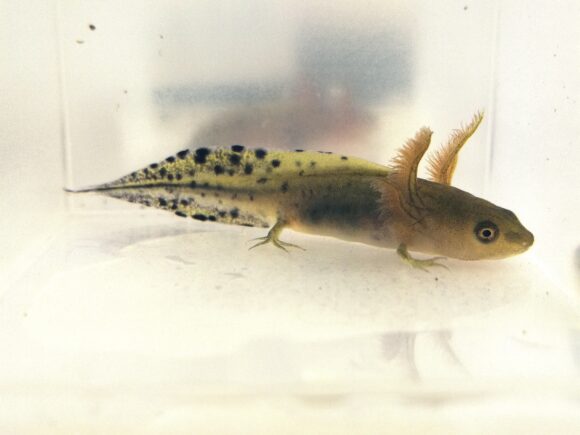Understanding how changes in the climate have influenced the spread of species is important if we want to conserve our most vulnerable species. Part of the answer lies in our ability to make predictions on whether species will be able to track predicted changes in the climate. This becomes important if we consider biodiverse regions of the world, such as the Cape Floristic Region (CFR). The CFR is thought to have evolved its rich biodiversity under a relatively stable climate, and species endemic to the region may therefore lack the ability to track changes in the climate.
 Focusing on endemic frogs of the CFR, a recent study by C·I·B student, Mohlamatsane Mokhatla with Dr’s John Measey (C·I·B) and Dennis Rödder (Zoologisches Forschungsmuseum Alexander Koenig, Germany) asks how past climatic changes have affected these species, and compare these with the rapid rates of predicted climate change, tracking suitable areas across space and time.
Focusing on endemic frogs of the CFR, a recent study by C·I·B student, Mohlamatsane Mokhatla with Dr’s John Measey (C·I·B) and Dennis Rödder (Zoologisches Forschungsmuseum Alexander Koenig, Germany) asks how past climatic changes have affected these species, and compare these with the rapid rates of predicted climate change, tracking suitable areas across space and time.
The authors used species distribution models to assess how the spread of CFR endemic frogs have changed through three key periods in history: the last glacial maximum (≈ 21 000 years ago), the Holocene glacial minimum (≈ 6 000 years ago) through to present-day, and whether these species will be able to keep up with rapid predicted changes by the year 2080.
The authors found that the rate, at which the endemic CFR frogs are expected to keep up given future climate change predictions for the CFR, far exceeds the rate at which species have moved since the last glacial maximum to the Holocene glacial minimum to current distributions. The study also suggests that the CFR endemic frog fauna has lost areas with suitable climates since the last glacial maximum, when species were able to use the exposed Agulhas bank. Since then, the distribution ranges of these frogs have been fragmented, and more recently, through habitat destruction due to land-use changes in the CFR.
“Making predictions from models such as these can help us predict how future climate change should be incorporated into conservation action in the region,” said lead author Mohlamatsane Mokhatla, “The linkages between habitats (breeding and non-breeding habitats, lowland and upland) will be crucial for poor dispersing animals such as frogs.”
Read the paper
For more information, contact Mohlamatsane Mokhatla at m.mokhatla@mail.com



